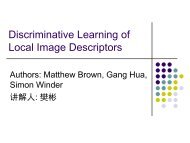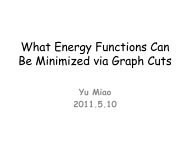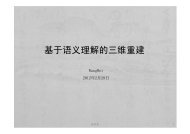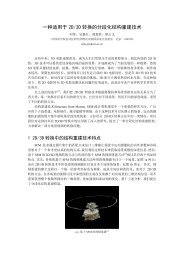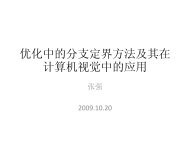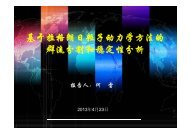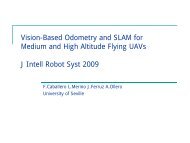Rotationally Invariant Descriptors using Intensity Order ... - IEEE Xplore
Rotationally Invariant Descriptors using Intensity Order ... - IEEE Xplore
Rotationally Invariant Descriptors using Intensity Order ... - IEEE Xplore
Create successful ePaper yourself
Turn your PDF publications into a flip-book with our unique Google optimized e-Paper software.
This article has been accepted for publication in a future issue of this journal, but has not been fully edited. Content may change prior to final publication.<br />
<strong>IEEE</strong> TRANSACTION ON PATTERN ANALYSIS AND MACHINE INTELLIGENCE 7<br />
support region, then they are concatenated together to form their descriptor. Moreover, they<br />
further proposed a similarity measure model, Local-to-Global Similarity model, to match points<br />
described by their descriptors.<br />
Our work is fundamentally different from the previous ones. We calculate local features in a<br />
rotation invariant way, but many previous methods are not strictly rotation invariant since they<br />
need to assign a reference orientation for each interest point, such as SIFT, DAISY and CS-<br />
LBP. As shown in our experiments in Section III, the orientation estimation is an error-prone<br />
process. Since our proposed descriptors do not rely on a reference orientation, they should be<br />
potentially more robust. In fact, the need of an orientation for reference is also a drawback<br />
and bottleneck of the previous methods which utilize multiple support regions, hence largely<br />
differentiates our method from them. Although some local descriptors such as spin image and<br />
RIFT (Rotation <strong>Invariant</strong> Feature Transform) [10] achieve rotation invariance without requiring<br />
a reference orientation, they are less distinctive since some spatial information is lost due to<br />
their feature pooling schemes. In our work, local features are pooled together according to their<br />
intensity orders. Such a feature pooling scheme is inherently rotation invariant, and also invariant<br />
to monotonic intensity changes.<br />
III. AN ANALYSIS OF THE ROTATION INVARIANCE OF LOCAL DESCRIPTORS<br />
Local descriptors in the literature can be roughly divided into two categories concerning<br />
rotation invariance: 1) Assigning an estimated orientation to each interest point and computing<br />
the descriptor relative to the assigned orientation, such as SIFT, SURF, CS-LBP; 2) Designing the<br />
local descriptor in an inherently rotation invariant way, such as spin image and RIFT. Currently, it<br />
is commonly believed that local descriptors belonging to the second category are less distinctive<br />
than those in the first category since their rotation invariance is achieved at the expense of some<br />
spatial information loss. Therefore, many existing local descriptors first rotate the support region<br />
according to a reference orientation, and then divide the support region into subregions to encode<br />
spatial information.<br />
Although SIFT, SURF etc. can achieve satisfactory results in many applications by assigning<br />
an estimated orientation for reference, we would claim that the orientation estimation based<br />
on local image properties is an error-prone process. We show experimentally that orientation<br />
estimation error will make many true corresponding points un-matchable by their descriptors.<br />
November 26, 2011 DRAFT



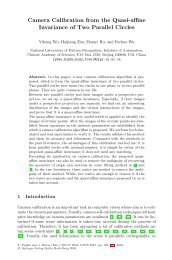
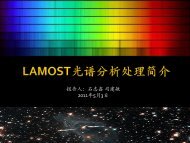
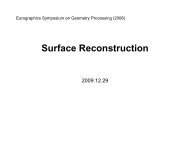
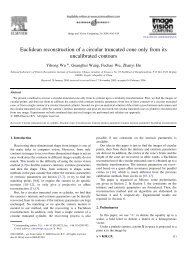
![Accurate, Dense, and Robust Multi-View Stereopsis (PMVS) [1,2,3]](https://img.yumpu.com/19388840/1/190x135/accurate-dense-and-robust-multi-view-stereopsis-pmvs-123.jpg?quality=85)
